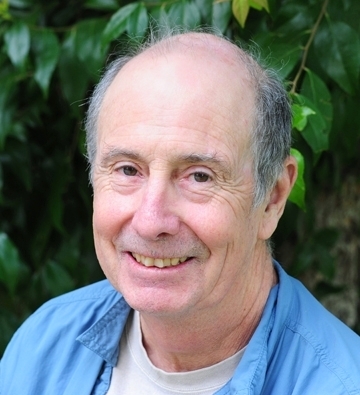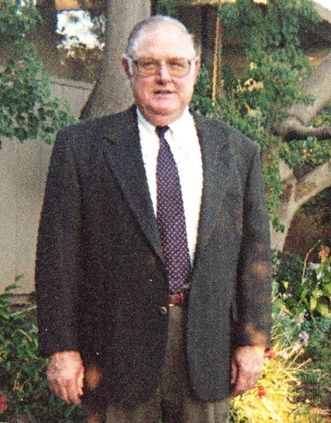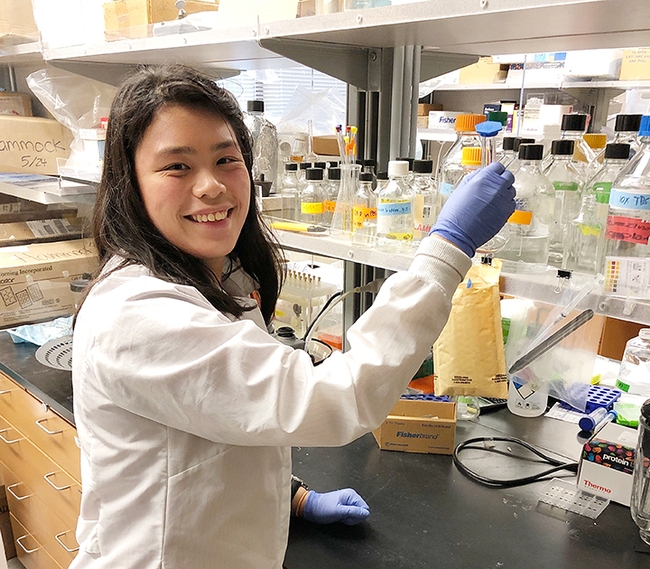
Congrats to UC Davis undergraduate entomology major Rachel Shey, a research assistant in the laboratory of UC Davis Distinguished Professor Bruce Hammock, who won not only the poster competition, but more importantly, the $5000 Francesca Miller Undergraduate Research Award that will fund six weeks of full-time summer research.
Well done, Rachel!
The symposium, sponsored by the Department of Chemistry and recently held in the UC Davis Conference Center, featured cutting-edge research in chemical biology, organic, and pharmaceutical chemistry. It memorializes Professor Miller (1940-1998) the 1985-90 chair of the Department of Chemistry and the 1997-1998 chair of the Academic Senate.
“We're very proud of Rachel,” said Hammock, who holds a joint appointment with the Department of Entomology and Nematology and the UC Davis Comprehensive Cancer Center. “Rachel winning the undergraduate research award as well as the first-place award for her poster on her research—that's no surprise. She is enthusiastic about science and has wonderful collaborations with our scientists. She is one of those rare people who can cross disciplines, and in this case, integrate molecular biology, chemistry, and analytical chemistry to address a serious problem in the world food supply. Not only that, but she makes the lab had more fun place to be.”
In her abstract, co-authored with mentor Hammock and project scientist Mark McCoy of the Hammock lab, Shey wrote:
“Have you ever forgotten about a bagel on the counter and come back a few days later to find that it has grown a thin layer of fuzzy green mold? Most people know not to eat it, but why not? Aspergillus fungus produces a toxin called aflatoxin, which is the reason moldy bread, bitter peanuts and other foods may not be safe to eat. Aspergillus grows on virtually all major crops in the world, and aflatoxin is present wherever Aspergillus grows.”
“I am developing a nanobody-based immunoassay for the detection of aflatoxin B1 in the matrix of hemp bud, intended to simulate cannabis. Nanobodies, also known as VHHs (heavy chains) represent a new technology. They are small antibodies which are derived from camelids and sharks. Unlike regular antibodies, nanobodies are made of only heavy chains and are therefore about ten times smaller than traditional monoclonal antibodies or polyclonal antibodies. Because nanobodies are encoded on a single polypeptide chain, they can be grown in E. coli cheaply and in large amounts.”

“Cannabis is highly regulated in California,” Shey pointed out, “but batches of cannabis that fail testing are usually sold on the black market rather than at a regulated dispensary. Consumers who decide to run the risk of purchasing cannabis from an unregulated seller would also benefit from immunoassays for monitoring the levels of various pesticides and known contaminants, including aflatoxin. This immunoassay could be useful for not only commercial labs analyzing cannabis, but also consumers purchasing cannabis illegally.”
Shey also presented her poster research at two other UC Davis conferences this year: the Undergraduate Research, Scholarship and Creative Activities Conference (URSCA) and the 2023 Richard LaRock Conference.

“I was really drawn to entomology because I've loved playing with insects ever since I was a kid,” Rachel said. “When I took organic chemistry, I fell in love with the unique style of problem solving and I grew passionate about its practical aspects as well.”
In the Hammock lab, she helps in immunoassay experiments, delivers presentations to the lab, and learns about research and science. “I am developing proficiency with ELISA (enzyme linked immunosorbent assay) and phage work,” Shey said. She is working on an independent project funded by an Innovation Institute for Food and Health Undergraduate Research Fellowship (IIFL) from the UC Davis Undergraduate Research Center. It involves the detection of aflatoxin in mouse brain tissue.
Shey also is a research assistant (since November 2022) in the lab of Cody Ross Pitt, assistant professor, UC Davis Department of Chemistry, where she is learning organic synthesis methods, including setting up air-sensitive reactions, working up reactions, using columns to purify the crude material, and operating a rotary evaporator (rotovap).
She has served a general and organic chemistry tutor or the UC Davis Academic Assistance and Tutoring Center (AATC) since September 2021. She staffs the drop-in area in the library and the online Zoom drop-in room for several hours each week. “I assist students with chemistry questions with the goal of helping my students develop study skills.”
Shey also worked part-time for almost two years as a city news reporter for the California Aggie, the UC Davis student-run newspaper.
Her career plans: to study organic chemistry and obtain a doctorate in chemistry. “I would love to work in medicinal chemistry or agrochemistry.”
“When I first talked to her she was excited over epoxides as such interesting chemical functionalities,” said Hammock, known for his expertise in chemistry, toxicology, biochemistry and entomology. Early in his career, he founded the field of environmental immunoassay, using antibodies and biosensors to monitor food and environmental safety, and human exposure to pesticides. His groundbreaking research in insect physiology, toxicology led to his development of the first recombinant virus for insect control.
“I saw Barry Sharpless last week, who like Linus Pauling, won two Nobel Prizes," Hammock said. She reminds me of Barry. The world needs more undergrads like Rachel.”
Attached Images:
